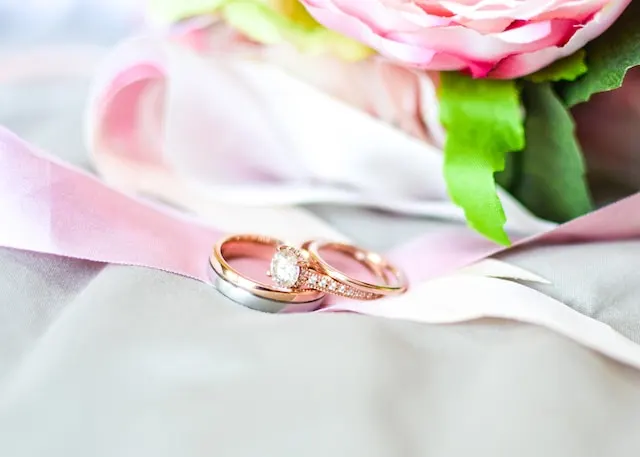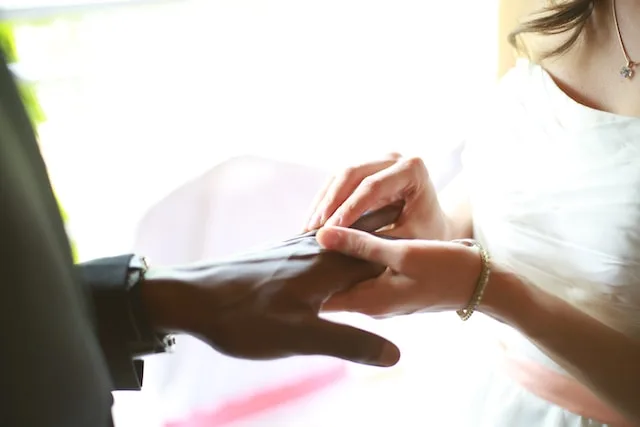Wedding rings, small yet profoundly symbolic items, have been a ubiquitous symbol of love and commitment for countless generations. These simple bands, often wrought from precious metals, carry with them a weight far exceeding their physical heft. The circular design, devoid of a starting or ending point, is a poignant representation of everlasting love and unbroken commitment. This universal emblem transcends cultural and geographical boundaries, weaving a common thread through the infinite tapestry of human love stories.

With such profound significance attached, it’s not surprising that the act of exchanging wedding rings often stands as the emotional climax of a marriage ceremony. But how did these small bands of metal come to hold such a powerful place in our hearts and societies? Let’s delve into the fascinating journey of the wedding ring, exploring its historical origins, varied interpretations, and enduring relevance in the modern world.
The Historical Origins of Wedding Rings
The tradition of wedding rings traces its roots back to ancient Egypt, approximately 4800 years ago. The Egyptians revered the circle as a symbol of eternity and created rings from sedges, rushes, and reeds that grew alongside the infamous papyrus. These rings were worn on the fourth finger of the left hand, where it was believed a vein led directly to the heart, a belief later inherited by the Romans and named “Vena Amoris” or “Vein of Love”.
he custom was subsequently adopted by the Greeks after Alexander the Great’s conquest of Egypt, and later by the Romans, who began the practice of engraving wedding rings. The incorporation of precious metals, such as gold and silver, in the crafting of wedding rings gained popularity during the Roman era, symbolizing wealth and social standing.
Despite cultural transformations and the passage of time, the ring’s representation of everlasting love endured, establishing a timeless legacy that continues to serve as a cornerstone in matrimonial ceremonies to this day.
Variations in Wedding Ring Traditions Across Cultures
While the concept of a wedding ring is a common thread uniting different cultures, the interpretation and practices around it vary significantly. In Western societies, it’s customary for both partners to wear a wedding ring on the fourth finger of their left hand, echoing ancient beliefs about the ‘Vein of Love’.
Meanwhile, in Eastern Orthodox and Central and Eastern European traditions, the wedding ring is often worn on the right hand. In India, rather than a ring, a bride might wear a “Mangalsutra,” a necklace symbolizing marital status, or toe rings known as “Bichiya.” In some cultures, wedding rings are simple, unadorned bands, while in others, they are lavishly embellished or paired with an engagement ring in a bridal set.
Despite these differences, the underlying symbolism of eternal love and commitment remains a constant, demonstrating the universal human desire to celebrate and commemorate the bond of marriage.
Moissanite Wedding Rings As A Modern Twist on a Timeless Tradition
The modern world has seen the rise of new alternatives to traditional diamond wedding rings, one of which is moissanite. Moissanite is a rare gemstone with properties that rival or surpass those of diamonds and has become increasingly popular as an ethical and affordable option for engagement and wedding rings. This sparkling stone, first discovered in 1893 by French chemist Henri Moissan, offers couples a unique and sustainable choice while preserving the timeless symbolism of everlasting love.
Just like diamonds, moissanite is extremely durable and will retain its brilliance, making it an ideal choice for daily wear in wedding rings. Namely, whether you decide to take a look at the IfShe moissanite rings, and the numerous design options they offer, or opt for a traditional diamond ring, the symbolism and beauty of the wedding ring will remain unchanged. You can honor centuries of tradition or break the mold with a modern twist; either way, your wedding ring will serve as a tangible symbol of your love and commitment.

Customizing Your Wedding Ring
In recent years, there has been a surge in the trend of personalizing wedding rings, imbuing them with profound meaning and reflecting the unique love story of the couple. This personalization can take various forms, such as engraving the partner’s name or wedding date inside the ring, selecting gemstones with personal significance, or even crafting a completely bespoke design. Some couples opt for matching rings, while others prefer designs that complement each other harmoniously.
Enlisting the expertise of a skilled jeweler helps couples create a tangible symbol of their bond that is as extraordinary and one-of-a-kind as their love for each other. This personal touch adds a layer of significance to the wedding ring, reinforcing its role as a timeless emblem of eternal love and unwavering commitment.
The Future of Wedding Rings
As society evolves, so too does the tradition of wedding rings. The 21st century has seen a rise in the usage of unconventional materials such as titanium, tungsten, and even recycled metals in the crafting of wedding bands. These materials not only offer a unique aesthetic appeal but also cater to a growing demand for ethical and sustainable choices.
Silicone wedding rings are another emerging trend, especially favored by those with active lifestyles due to their comfort and durability. Customization continues to grow in popularity, with couples seeking to express their distinctiveness through unique designs, engravings, and material combinations. Intriguingly, futurists have gone as far as envisioning the emergence of digital or smart wedding rings shortly.
These innovative rings have the potential to track health data and foster digital connectivity. However, amidst these evolving trends and materials, the timeless symbolism of the wedding ring perseveres as a symbol of love, eternal and unbroken, embodied by a circular band.
The Psychology Behind Wedding Rings
Wearing a wedding ring serves as a constant reminder of the commitment one has made to their partner, reinforcing the sense of responsibility and fostering greater relationship satisfaction. Furthermore, wedding rings also serve as a public declaration of one’s marital status, creating a sense of belonging and societal acceptance.
For many, it’s a source of pride, embodying the successful accomplishment of a significant life milestone. At a personal level, the wedding ring holds cherished memories of the special day. It serves as a tangible connection to the past, reminding us of the vows exchanged and the joyful celebration that followed.
Beyond its symbolic representation of eternal love, the wedding ring also carries psychological significance, emphasizing its essential role in marriage traditions.

In conclusion
The wedding ring, a simple circular band, holds a profound place in human societies across the globe. Its history is rich and varied, tracing back to ancient civilizations and evolving over time to accommodate cultural, societal, and personal preferences.
Today, whether crafted from precious metals or innovative materials, adorned with gemstones, or simply unadorned, traditional, or customized, the wedding ring upholds its timeless symbolism of eternal love and unwavering commitment. As a physical manifestation of matrimonial vows, it serves as a constant reminder of the bond between two individuals, their unique love story, and their pledge to journey through life together.
Despite the changing trends in materials and designs, the essence of the wedding ring remains constant—a universal symbol of love, commitment, and the shared human desire to celebrate and commemorate the bond of marriage. As we move forward into the future, it will be fascinating to observe how this enduring tradition continues to evolve while maintaining its heart—the promise of everlasting love.
